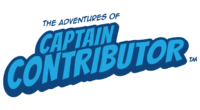What is a Section 125 Cafeteria Plan?

Do you have fond memories of your school cafeteria? If not, here’s a joke for you. What’s the worst thing you’ll likely find in a school cafeteria? The food!
Now that you’ve enjoyed another of my famously funny jokes, let’s keep the “cafeteria” discussion going by answering the question, “What is a Section 125 Cafeteria Plan“?
Section 125 Cafeteria Plans
Section 125 Cafeteria Plans are used to pay for certain employee benefits, such as health insurance premiums, with pre-tax money. The plans offer various healthcare options, and employees choose the benefits they need and want.
Cafeteria Plan Requirements
The first requirement is that the employer offers at least one taxable and one pre-tax-eligible benefit as part of your salary. Pre-tax benefits include health and disability insurance, FSAs, DCAPs, HSAs, and contributions toward retirement plans.
For example, under the Section 125 Cafeteria Plan, your employer may offer the cost of their group healthcare plan premium as a cash option that can be used for either healthcare coverage or another benefit. If you use the funds to purchase healthcare coverage or a similar benefit, you aren’t taxed on the funds. If you instead take the funds as cash, you are taxed on the amount like regular income. You can also opt-out and not take either the benefit or the cash equivalent.
Benefits for Employees
A Cafeteria Plan under Section 125 offers various healthcare options you can enroll in and pay for. You can participate in benefits like Health Flexible Spending Accounts or Dependent Care Flexible Spending Accounts, even if you don’t participate in the company health insurance plan. These accounts cover out-of-pocket expenses that your health insurance doesn’t cover. You can also choose to participate in retirement contributions or other benefit options. If none of the offered benefits appeal to you, there are alternatives such as cash, supplemental life insurance, or disability insurance. You can lower your taxes by contributing to the Cafeteria Plan before tax deduction calculations.
Section 125 Cafeteria Plan options offer significant tax and money-saving advantages. Flexible Spending Accounts (FSAs) can pay for qualified medical expenses. Health Savings Accounts (HSAs) are similar to FSAs, but you own the account and it goes with you if you leave your job. Dependent Care Flexible Spending Accounts (DCFSAs) or Dependent Care Assistance Plans (DCAP) allow parents and caregivers who work or attend school to save on care expenses for dependent children and adults.
Benefits for Employers
Your employer also benefits from offering a Section 125 Cafeteria Plan through lower payroll tax liabilities, which may offset the costs of offering the cafeteria plan. Having a cafeteria plan may also help your employer to attract and retain existing talent.
Finally, unused funds in FSA accounts with “use it or lose it” provisions become the property of the employer at the end of the plan year or if the employee leaves the company. (But don’t get mad at your employer – this rule comes from the IRS!
I hope my Cafeteria Plan discussion has made you hungry for lunch and employer benefits! And I hope I’ve answered your question about what Section 125 Cafeteria Plans can do for you. But if you’re still hungry for more information, ask your HR representative or benefits administrator.
